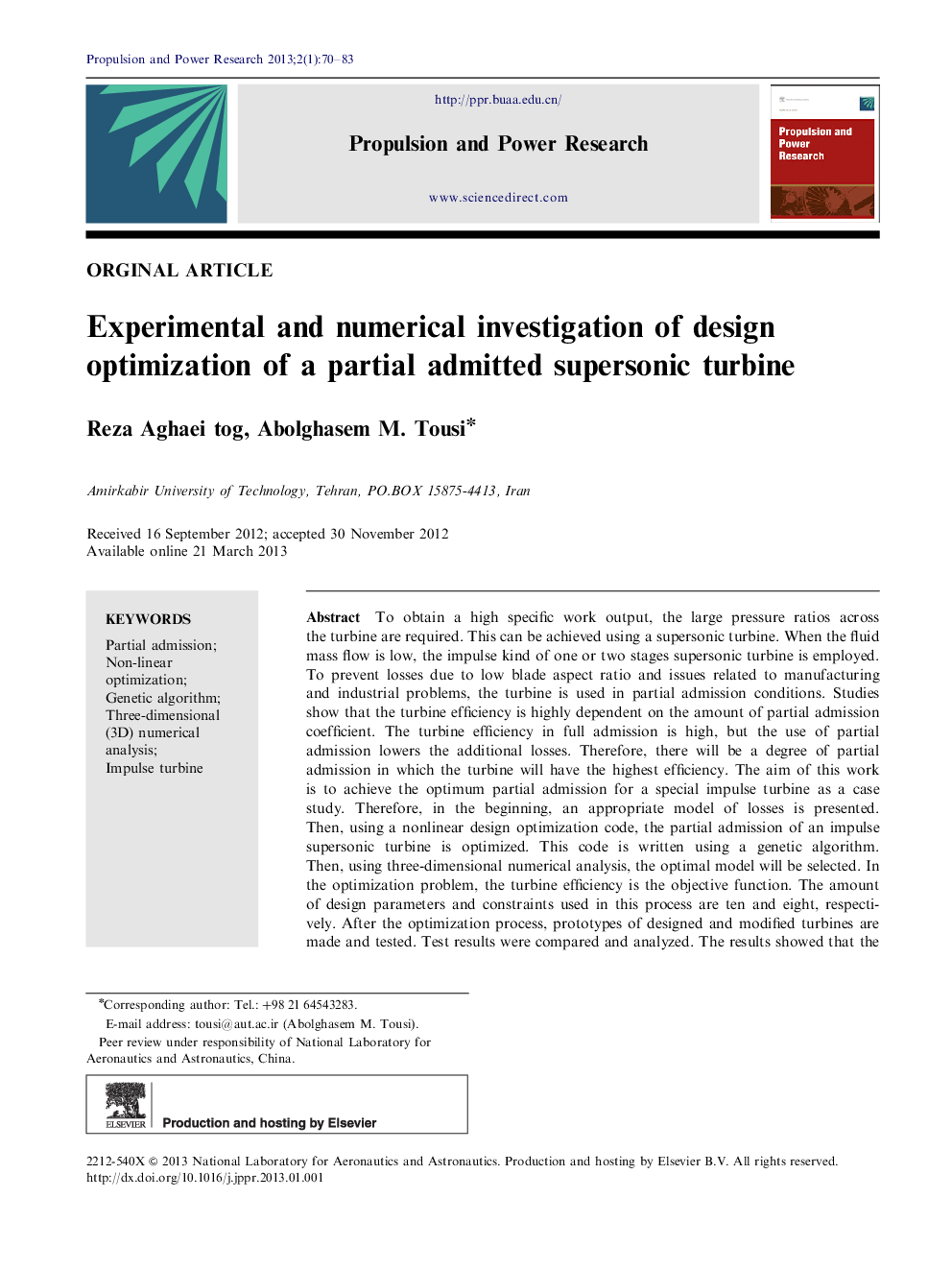| Article ID | Journal | Published Year | Pages | File Type |
|---|---|---|---|---|
| 1719717 | Propulsion and Power Research | 2013 | 14 Pages |
To obtain a high specific work output, the large pressure ratios across the turbine are required. This can be achieved using a supersonic turbine. When the fluid mass flow is low, the impulse kind of one or two stages supersonic turbine is employed. To prevent losses due to low blade aspect ratio and issues related to manufacturing and industrial problems, the turbine is used in partial admission conditions. Studies show that the turbine efficiency is highly dependent on the amount of partial admission coefficient. The turbine efficiency in full admission is high, but the use of partial admission lowers the additional losses. Therefore, there will be a degree of partial admission in which the turbine will have the highest efficiency. The aim of this work is to achieve the optimum partial admission for a special impulse turbine as a case study. Therefore, in the beginning, an appropriate model of losses is presented. Then, using a nonlinear design optimization code, the partial admission of an impulse supersonic turbine is optimized. This code is written using a genetic algorithm. Then, using three-dimensional numerical analysis, the optimal model will be selected. In the optimization problem, the turbine efficiency is the objective function. The amount of design parameters and constraints used in this process are ten and eight, respectively. After the optimization process, prototypes of designed and modified turbines are made and tested. Test results were compared and analyzed. The results showed that the turbine efficiency is improved between 2.5% and 3% depending on various operation conditions.
